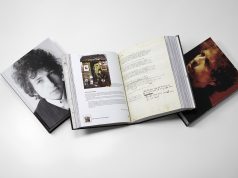
To extract Shelley Duvall’s traumatized, haggard performance in The Shining, director Stanley Kubrick made her life a living hell for the duration of shooting.
“From May until October, I was really in and out of good health, because the stress of the film was so great,” Duvall tells Kubrick’s daughter, Vivian, in a documentary called Making The Shining.
The next scene shows Duvall sprawled in a chair, lips on a cigarette like a scuba diver on a regulator.
“Look at this,” she says, pinching strands from her head to show Stanley Kubrick as he walks by. “I’ve pulled hunks of hair out.”
Kubrick takes the hair from Duvall and holds it up to the camera, bemusedly muttering, “hunks of hair. OK,” as a wry smile crawls onto his face. He doesn’t appear to give it a second thought as he walks through the door behind Duvall.
“Come on, Shelley,” he says, seemingly unmoved by her stress.
“Get the dummy,” he calls harshly, and he almost sounds like he’s talking about Duvall until he says, “Oh right, she’s not carrying it in that scene.”
He starts to leave the room again and then turns back, telling his daughter, “Don’t sympathize with Shelley. … It doesn’t help her.”
And yet, after the film, Duvall is grateful for the abuse.
“I resented Stanley at times because he pushed me, and it hurt,” Duvall says, but then she adds, “He’s taught me more than I’ve learned in all the other pictures I’ve done, within one year’s time, on one picture.”
Stanley Kubrick was the main inspiration for the shadowy antagonist Stanislas Cordova in Marisha Pessl’s second novel, Night Film, which came out Aug. 20. Cordova is a filmmaker whose work evokes either revulsion or fascination in the novel’s world, and he comes off as an auteur with Kubrick’s craftsmanship, Alfred Hitchcock’s imagination and David Lynch’s fascination with humanity’s dark side. Cordova, much like Kubrick, is a recluse. Surrounded by devotees in his own private estate he rarely leaves, a dark shroud of mystery surrounds the fictional filmmaker. She says that the seductive genius of real-life masters, like Kubrick or Picasso, whose personalities dominated the spaces around them, fascinated her.
“I would say Kubrick [inspired the character] for the most part, the way his myth intersected with what was his reality,” Pessl tells Boulder Weekly. “How when he was creating a film, how deeply that infused his personal life. … Just the idea of an auteur-slash-genius that people willingly went out of their way to work with, and really gave their lives over to a person in order to create art. I think that is an interesting conceit.”
The novel follows investigative journalist Scott McGrath, who decides one day to try to peer behind the curtain of Cordova’s mystique. The attempt backfires when he recklessly slanders the director on national television, costing McGrath his marriage, his career and his sense of self-worth. The novel begins with McGrath years later, still trying to piece together his life. A mysterious woman in a red coat unnerves him during a routine jog through a New York City park. He soon finds out that Cordova’s daughter, Ashley, has died, apparently by suicide, and as he delves deeper into the facts of the case, he becomes drawn once again towards the reclusive filmmaker, setting him down a dark path that threatens to change his life forever.
Cordova doesn’t actually appear but instead looms over the novel, which follows McGrath’s attempts to determine if Ashley’s death was suicide or murder. He gathers two sidekicks on the way, and during the investigation encounters a mental hospital, an underground sex club and an occult store. It makes for an engrossing, quick read — 600 pages fly by in no time.
There’s something seductive about the fictional, idealized genius of Cordova. Readers, of course, only experience his films second-hand, through breathless descriptions of the work. By not having to actually create a legendary oeuvre herself, Pessl is able to convey the legend of her character’s films through inference and description. Speaking to McGrath, an actress describes her Duvall-like, Stockholm Syndrome experience of working with Cordova:
“Naturally, there was the glory that came with appearing in a Cordova picture. You were made. You would get the best roles after working with him. Even when he went underground. It gave you cachet. You were a warrior. Yet the true value of working with Stanny was not money or acclaim, it was the afterward. All of us actors spoke of it. When you finally returned to your real life after working with Cordova, it was as if all the colors had been turned way up in your eyes. The reds were redder. Blacks blacker. You felt things profoundly, as if your very heart had grown giant and tender and swollen. You dreamed. And what dreams. Working with that irascible man was the most grueling time of my life. I accessed the deepest, most tormented parts of myself, parts I was petrified of opening because I doubted I’d ever get them closed again. Perhaps I never have. But I’d do it again in a heartbeat. You were making a film. Something that would outlast you. Something wild. A powerful piece of art that wasn’t a commercial concoction, but something to slice into people, make them bleed.”
Pessl intersperses various illustrations to aid her storytelling, and there’s an app to go along with the book release. We first hear about Ashley’s death from what appears to be a screenshot of the New York Times website, and then we get an 18-image slideshow from Time magazine explaining the films and legend of Cordova. Police reports and photographs pepper the book as well. Pessl says this was to allow the reader to build an image of Cordova similar to how one would form an opinion of such a person in the real world, and it was part of her vision for the book from the beginning.
“Night Film, when I started to conceive it, when I started to talk to my agent about the book that I wanted to write, it always had an archival quality,” Pessl says. “I arranged it and began piecing together stories from newspaper clippings, and just different voices coming together to discuss this prominent figure. So really, from the beginning it had that quality, and I wanted to give readers an immediate sense of what Cordova’s visual world was, what major publications have written about him, but simultaneously what anonymous people posting in the comment section of obscure websites say as well, because that’s very much how we piece together artists in our world. We come at it from a lot of different perspectives and then really draw our own conclusions. I certainly wanted readers to have that same experience.”
The effect is unsettling. Night Film leaves the reader wanting more, wanting to dive face-first into the world of Cordova and his diehard fans.
It is an illusory and seductive world, which, tragically, dissolves after the last page.
Respond: [email protected]














